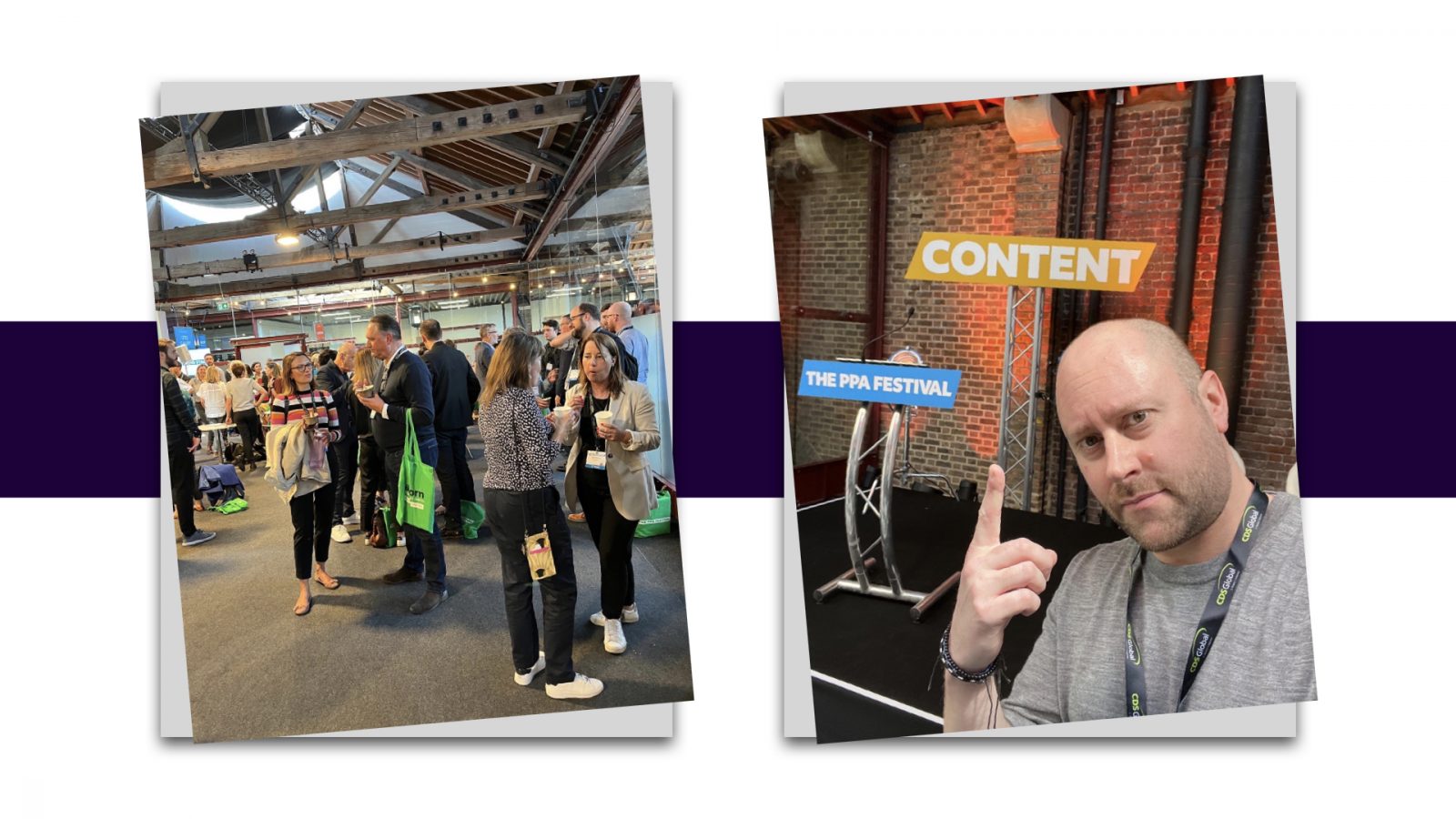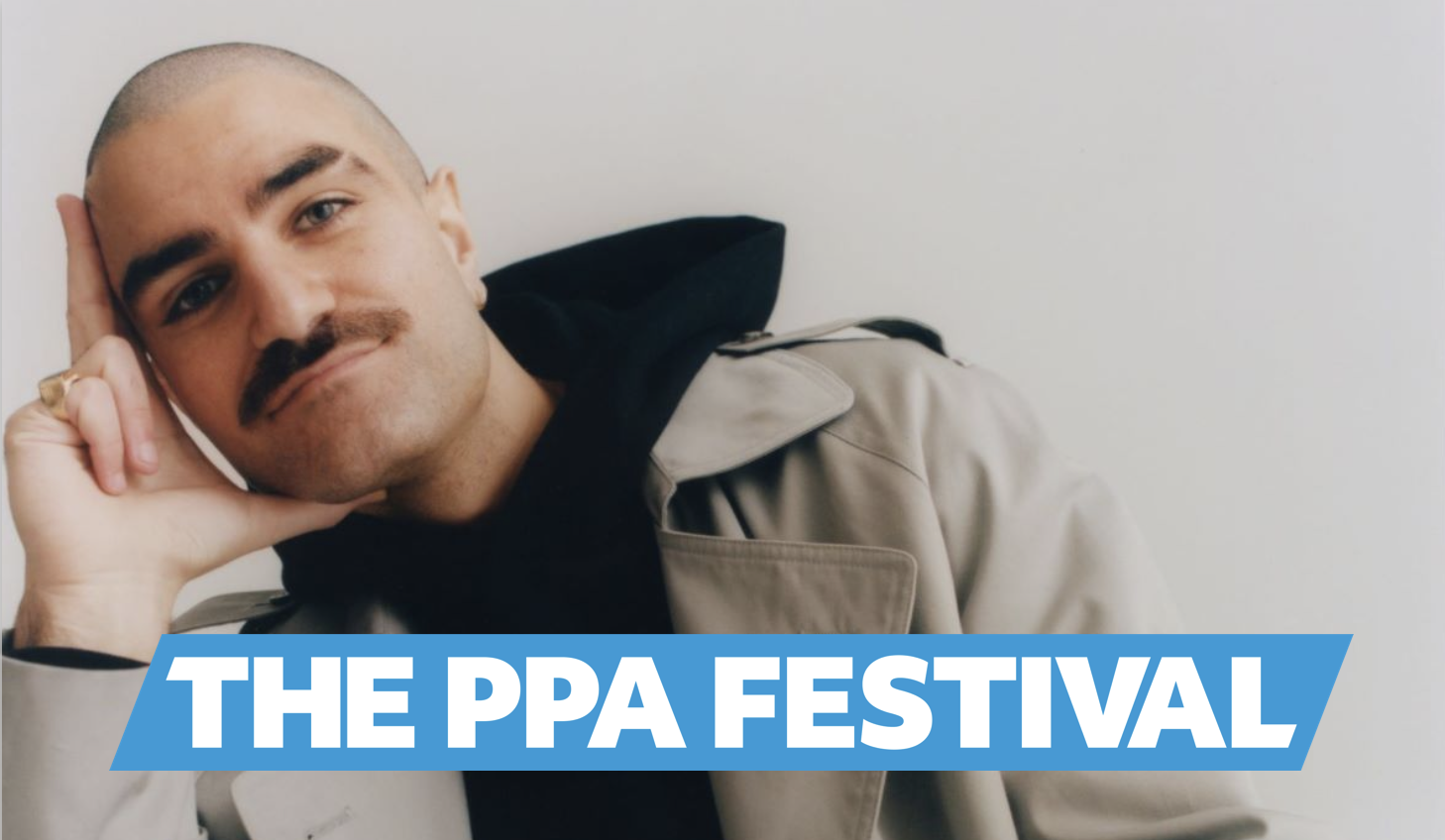5 key takeaways from this year’s PPA Festival
It was Back to Reality in more ways than one in London this week, as the PPA Festival returned to its physical home at Tobacco Dock, and the country’s media sector laid out its plans for dealing with the country’s (and the world’s) post-pandemic inflation. With big brands under the spotlight from GQ to Marie Claire, The Telegraph to New Scientist, the event provided both an opportunity to celebrate the UK emergence from the lockdown era, as well as analyse – with cautious optimism – new plans for future growth ahead.
Putting the pandemic behind us
The PPA Festival has longsince been billed as a showcase for the organisation’s five key themes. Speakers shared data, insights, and analysis across five key stages, named:
- Together
- Content
- People
- Product
- Audience
The resounding takeaway (that this editor took) from the event was quite how far we’ve come in the post-pandemic era. The masks were off, the networking spaces were full, and with the sun shining brightly on the nation’s capital, there was a palpable sense in the air that lockdown is over, and it’s time to get back to ‘business as usual’.
“We haven’t really noticed a recession beginning to pinch,” said Clare Dove, Future’s UK Group Commercial Director, in a panel discussion about revenue diversification on the Together stage. “People have started talking about it, but we haven’t felt it yet. The video games sector for example tends to do quite well during times of recessions. The worst thing can be when people start to worry and aren’t focussed on the job. So at this point, it’s more important than ever to focus on what the priorities are, and what needs doing next.”

The pivot to paywalls
And just what are those priorities? Well, one thing that was clear at the Festival is that reader revenues remain very much the talk of the media town. There were a number of sessions dedicated to D2C, and it was notable that even in those that weren’t, the subject was never far from the top of the agenda.
“We have to peel ourselves away from the addiction to scale a little bit,” said Karen Eccles, Managing Director of Digital & Innovation for the Telegraph Media Group. “It’s a very different story right now to what we would have thought of in terms of advertising numbers even four years ago.”
“The Telegraph was the first major UK publisher back in early 2019 to go on record as saying that we – as an industry – were measuring the wrong thing, and that we should be measuring attention. I remember at the time we got so much pushback, because everyone was just used to big numbers! But big numbers are just a proxy for some sort of actual business transaction further down the line.”
Foundry’s (formerly IDG) International Chief Revenue Officer, Neil Michael, said similar: “Our traditional media brands are still absolutely at the heart of our business – we just think about them differently now. They used to be there to drive advertising. Now it’s all about driving connections with audiences around the world.”
International content
And that last point made by Michael is an important one, because alongside the palpable sense of stoic optimism in the air at Tobacco Dock on Thursday, was for me a much more internationally-focussed UK Festival than I’d ever experienced before the pandemic. The awesome power of digital to connect content and conversations across borders became more apparent than ever before during the pandemic, and in a session dedicated to ‘Cross-border content strategies for a connected world’, Adam Baidawi, Head of UK Editorial Content & Deputy Global Content Director for GQ, laid out the need for greater international cooperation starkly.
“It became apparent that in our 21 international incarnations, what we had was 21 very disjointed businesses. And the magazines were often very different. Some were big hypebeasts with a focus on photoshoots, while other versions felt more like extended weekend supplements.”

“Also, the way we were doing things was just incredibly inefficient. I distinctly remember that during one particular nine week window, three different GQ’s carried out three different shoots with Rami Malek, each putting him on the cover. Now I love Rami Malek, but it was to absolutely no-ones benefit to do three separate shoots for three separate magazines! So at the end of 2020 we basically started getting incredibly organised from a cross-border standpoint, and our global editorial strategy is now led by a global leadership committee, which is a bit like the UN of GQ!”
And like a lot of these themes, we’ll be publishing a deeper dive into Adam’s insights on international publishing – along with the views of some other speakers on this topic – next week. As always, stay tuned to FIPP.com!
Making diversity mainstream
Another thing that strikes one as you get ‘Off the Zoom and into the room’ (to borrow a phrase from our own upcoming Congress next month) is that we are clearly leaving lockdown in a verry different world to the one we entered in. And I mean in a good way. Diversity, Equality, & Inclusion are no longer buzzwords. They are tangible programmes now, with market leaders across the UK and beyond making diversity a key area of focus – from both an ethical and a commercial pov.
“At New Scientist, we currently have two very clear DEI focusses,” said Adrian Newton, the company’s Commercial & Events Director. “The first is on gender, and it really began in 2016, when we were acquired by a small group of private investors with a firm eye on this area. The company appointed its first female CEO, and now 6 out of our 8 board members are female, which also of course helps to encourage further female progression throughout the business.”
“The second important area is around Black Lives Matter. We have been especially proactive in this area, and you could argue that – in a weird way – we’re not necessarily being representative here, because the science sector itself is very ‘male and pale’. But for us, it’s not just about what New Statesman does itself – we sit in a unique p[position at the intersection of publishing and science, and we want to help generate further change in these wider industries as well.
Again, we’ll have a deeper dive into the DEI discussions from the Festival next week, but for now at least, take my somewhat ‘male and pale’ perspective on it here: Progress is undoubtedly being made. Where once we were talking about concepts, we are now talking about pragmatic programmes. While there is of course still much to do, now at least theory is being converted into actions.

Editor’s pick
And as a follow-on from the previous theme, a wider point of positivity for the last. I’ve been attending these events for the best part of two decades now (I know, right!) and when you attend them, you’re always looking for – I wouldn’t say ‘the next big thing’ – but maybe a tangible representation of genuine innovation or originality that has the potential to move the industry on even further…
For me that this year came from Hearst, in an excellent research-led session titled ‘Emotional connection: Lessons from the Positivity Project’, which I’ll at this point let the Festival agenda do the talking on:
‘Research from Hearst UK has highlighted how positive media environments can positively impact the connection with target audiences and commercial partners. In this session, the Positivity Project team reveal the evidence behind the theory, sharing the findings of their latest emotional uplift survey and uncovering the real business value that can be gained from a deeper understanding the sensitivities, feelings and attitudes of your audience.’
Faye Turner, Hearst UK’s Head of Commercial Strategy & Insight, explained how taking a positive approach to content creation has not only helped to raise audience engagement, but also given the company a modern identity to crystalise itself around.
“The first thing to ask is why positivity, and why Hearst for positivity? We have 21 iconic brands, and we were trying to think of a common theme that could unite them all together. Because while the content is great, we produce it for very niche, often very diverse passion bases. So we ended up having a bit of an ‘Aha!’ moment when we realised that positivity is naturally embedded throughout all of the content we produce.”
To test the impact of positive content, audience studies were conducted, and the results were… well, positive!
“When we looked at the shifts that our positive content could influence, the biggest were across enthusiasm, excitement, and determination. Audiences were found to be 36% happier, 28% more excited, and 28% more enthusiastic having engaged with us. Uplifts in such emotions were enjoyed for at least 24hrs after interactions with our brands, which of course provides a window of opportunity in which to communicate with them in a positive way. From start to end, people were becoming more positive by engaging with us, and the more they engaged, the more positive they became.”
Overall, it was a triumphant return to physical world form for this year’s PPA Festival, and the UK industry it represents. Despite two years of lockdown, and no misunderstanding that the current global macro-economic situation could still bring some difficult months and years ahead, the smoke signs from Tobacco Dock were extremely positive. Now, as an industry, we go again.








